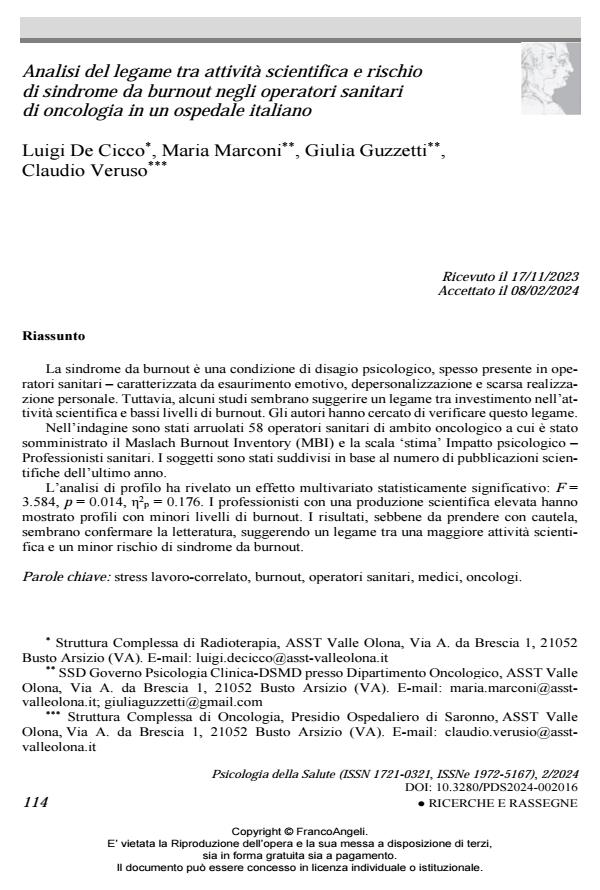Link analysis between scientific activity and risk of burnout syndrome in oncological health care professionals at an Italian Hospital
Journal title PSICOLOGIA DELLA SALUTE
Author/s Luigi De Cicco, Maria Marconi, Giulia Guzzetti, Claudio Veruso
Publishing Year 2024 Issue 2024/2
Language Italian Pages 17 P. 114-130 File size 348 KB
DOI 10.3280/PDS2024-002016
DOI is like a bar code for intellectual property: to have more infomation
click here
Below, you can see the article first page
If you want to buy this article in PDF format, you can do it, following the instructions to buy download credits

FrancoAngeli is member of Publishers International Linking Association, Inc (PILA), a not-for-profit association which run the CrossRef service enabling links to and from online scholarly content.
Burnout syndrome is a condition of psychological distress, often found in health care workers – characterized by emotional exhaustion, depersonalization and low personal accom-plishment. However, some studies seem to suggest a link between investment in scientific ac-tivity and low levels of burnout. The authors tried to verify this link. Fifty-eight oncology health care professionals were enrolled in the survey and adminis-tered the Maslach Burnout Inventory (MBI) and the Psychological Impact-Healthcare Profes-sionals ‘esteem’ scale. Subjects were divided according to the number of scientific publica-tions in the past year. Profile analysis revealed a statistically significant multivariate effect: F = 3.584, p = 0.014, η2p = 0.176. Professionals with high scientific production showed profiles with lower levels of burnout. The results, although to be taken with caution, seem to confirm literature, suggest-ing a link between higher scientific activity and lower risk of burnout syndrome.
Keywords: work-related stress, burnout, healthcare professionals, physicians, oncologists.
Luigi De Cicco, Maria Marconi, Giulia Guzzetti, Claudio Veruso, Analisi del legame tra attività scientifica e rischio di sindrome da burnout negli operatori sanitari di oncologia in un ospedale italiano in "PSICOLOGIA DELLA SALUTE" 2/2024, pp 114-130, DOI: 10.3280/PDS2024-002016